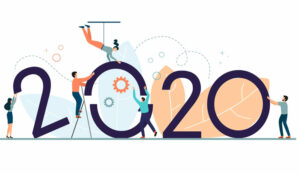Peter Farnsworth shares insights on how customer expectations in APAC have changed and explores how contact centres need to adapt.
We’ve certainly learned much about customer and employee expectations in APAC during the past year. Massive shifts to remote work, combined with greater preferences for instantaneous response, have led APAC contact centres to accelerate their digital transformations.
The process was arguably already happening—the pandemic just boosted it.
I had been involved in a lot of conversations with these contact centres prior to the pandemic about adopting new digital practices and focusing on employee experience to improve customer experience, but it was amazing how much resistance we received.
Usually, the response I heard was “this is the way we have always done it” or “this change looks too difficult to manage.”
Our recent report on the State of the Contact Centre showed that the pandemic forced most contact centres to accept change and adopt new ways of working to survive.
As we now enter the next phase (returning to something approaching normal), this now raised a new set of challenges for APAC CX leaders. How do we maximise on this change to enhance customer experience, improve employee culture and increase efficiency?
Companies must base-line their current position, establish new targets, set new goals and KPI’s and implement new practices. Companies that do not embrace these changes—and slip back into old habits—will have a difficult time surviving in a post pandemic world.
One of the key adaptive areas for contact centre and CX leaders involves how they handle data to make decisions. Data-driven decision makers have always outperformed those driven by emotion or ‘feel’.
New metrics and measurements need to be adopted, and modernised KPIs need to be accepted. Being data driven when pursuing change and planning for the future is the key to survival.
How can you collect that data? Moreover, how can you actually make sense of it? What are your customers and employees telling you?
It’s an incredibly complex process. Customers aren’t forgiving when feedback is ignored, and they want their problems fixed the first time. Customers want a simple solution—and contact centres want a simple way to provide it.
Empower a Flexible Workforce
As contact centres transition to remote workplaces, some employees have expressed a desire to work more, while others have certain times they cannot work. Some employees have or need more flexibility now that they are working from home, and you’ll need to address that.
Granting autonomy to your workforce while still meeting the needs of the business can be a challenge.
- Provides the tools that allow agents to self-manage, self-coach and have more autonomy in their schedule. This empowers and keeps them engaged, while still meeting business needs.
Develop a flexible workforce
Your employees may not be in the same building anymore, but you’ll still need to train and develop their skills.
Using personalised, self-service dashboards, you can quickly spot coaching opportunities and target training efforts to those that need it – whether it’s coaching around positive language or identifying technical expertise that needs further development.
- Voice-of-the-customer and voice-of- the-employee insights, such as AI-powered sentiment analysis and predictive evaluation scores, help target agent gap areas and identify agents in need of training. They also help determine what forms of training are needed based on interaction insights and patterns.
Manage a Flexible Workforce
No matter where your employees work, you need insight into how they are performing. A WFM provides real-time adherence technology, which allows you to monitor agent adherence to schedules and compare with live ACD statuses.
Anything out of adherence prompts an automated alarm. Interaction insights, live screen monitoring and desktop analytics from the rest of the suite allows you to then dig into the “why.”
- A WFM helps your organisation plan and manage its operations through advanced forecasting, dynamic scheduling, and intelligent automation.
Let Data Drive Business-Wide Value
Whether your data lives in silos due to structural issues, or simply because your organisation’s growth has resulted in multiple, incompatible systems, you need to break down these barriers and end the headaches of patching together vendor-, vertical-, or data type-specific reporting products.
- Advanced Reporting allows you to combine data streams from across the business. Connect systems from multiple vendors. Create a central view of all contact centre locations. Gain complete visibility into your omnichannel customer interactions to make better, more informed business decisions.
In each of these aspects, the key goal is simplification. You don’t need to spend time on manual monitoring processes, tedious data entry or scattered schedule management.
You can spend more time providing customers with the level of service they now expect—and increase your contact centre’s influence on the wider organisation.
This blog post has been re-published by kind permission of Calabrio – View the Original Article
For more information about Calabrio - visit the Calabrio Website
Call Centre Helper is not responsible for the content of these guest blog posts. The opinions expressed in this article are those of the author, and do not necessarily reflect those of Call Centre Helper.
Author: Calabrio
Published On: 22nd Jul 2021
Read more about - Guest Blogs, Calabrio






 The digital foundation of a customer-centric contact centre, the Calabrio ONE workforce performance suite helps enrich and understand human interactions, empowering contact centres as a brand guardian. Calabrio ONE unites workforce optimisation (WFO), agent engagement, and business intelligence solutions into a cloud-native, fully integrated suite.
The digital foundation of a customer-centric contact centre, the Calabrio ONE workforce performance suite helps enrich and understand human interactions, empowering contact centres as a brand guardian. Calabrio ONE unites workforce optimisation (WFO), agent engagement, and business intelligence solutions into a cloud-native, fully integrated suite. 






























